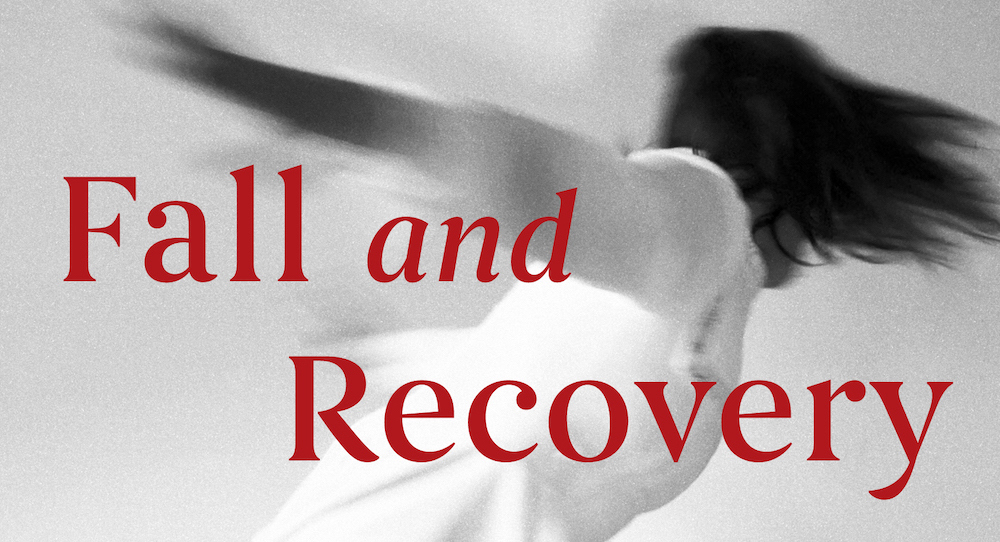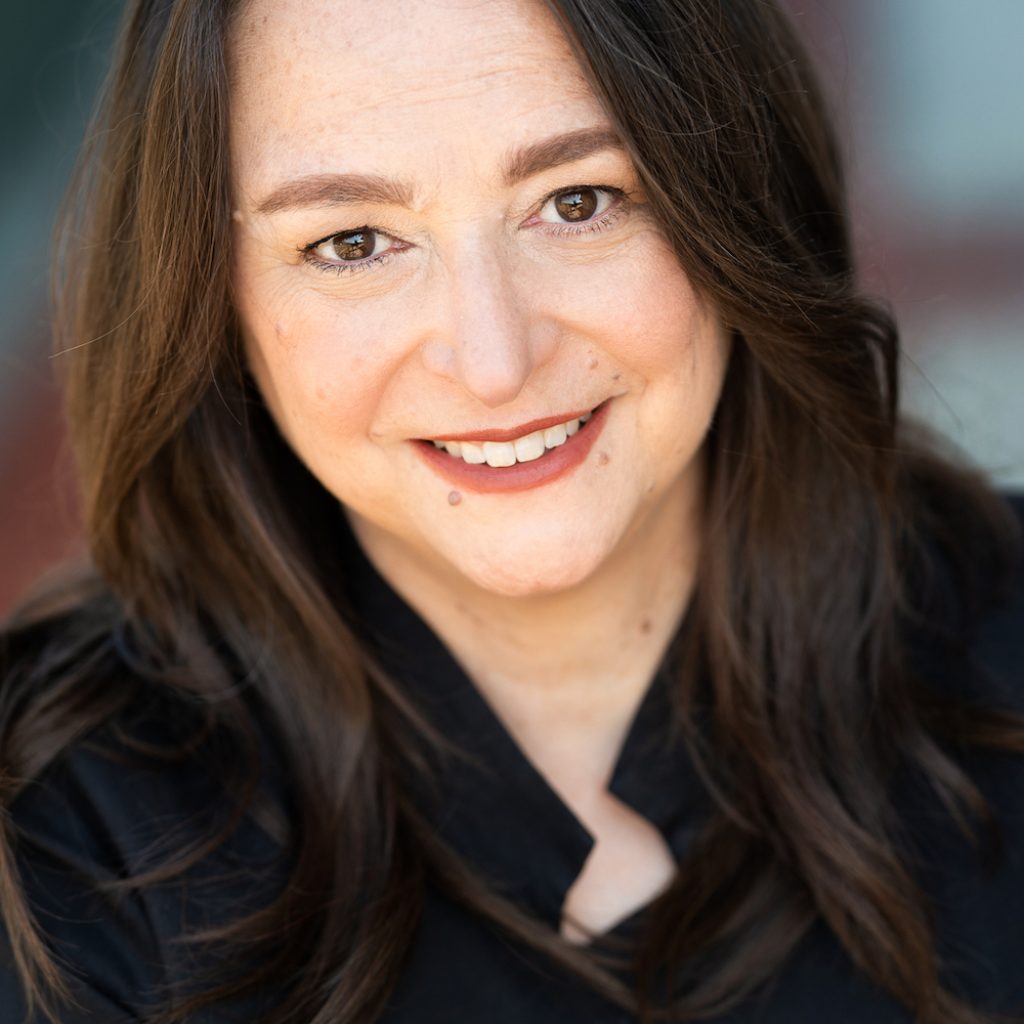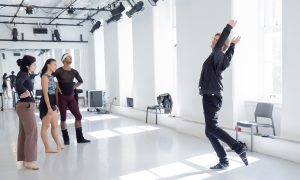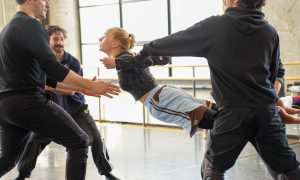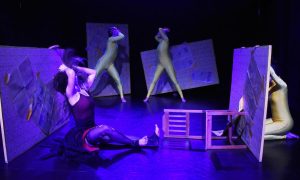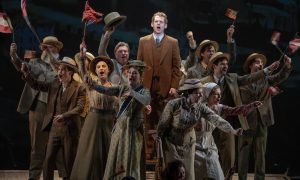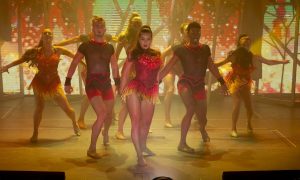Joanne De Simone had quite a full plate working as a special educator and caring for two disabled sons. She didn’t think that she’d ever write a book – yet, once she started to give speeches on her experiences, those listening told her that’s just what she should do. Once she started writing, another thread in the tapestry of her life began to shine: her time as a modern dancer in the Limón tradition.
De Simone came to dance late in life (for a dancer), in Hunter College’s program. Having found a level of success in choreography and performance, it seemed that she might be poised to become the newest Limón Dance Company member. Yet, like many dancers, she experienced the sting of another being chosen over her. She left dance, stepping on a new path to work in special education.
Years later, writing about caring for disabled children as a mother and as an educator, those experiences resurfaced. In her book, Fall and Recovery: Raising Children with Disabilities Through Lessons Learned in Dance, De Simone braids these plaits of story, memory and wisdom to create something quite poignant and memorable – for dancers, yes, but really anyone. No pliés or tendus required. Dance Informa speaks with De Simone to hear more about her story, how she sees dance and life intersecting, and more.
Structuring the book is an extended metaphor of life as dance, dance as life (which also beautifully connects with Limón’s There is a Time, also highly present in the book). How do you think this idea could influence dancers, as they balance busy lives and creative pressures?
“It’s interesting to me that when I was a dancer, it was a strong identity, yet I saw my life in different segments. I danced, I taught, and I worked in an office. Friends, family, work and dance were separate. But dance teaches us how to move through space and time by making connections from one movement to another.
When I sat down to write about my experiences as a mother, I never expected to make the dance connection. It came organically. My memoir teacher pointed this connection out to me, and then I was driven to focus on it.
Crafting the book was similar to choreographing a dance. The more I spent time with the work, the more it realized what it needed to be. I allowed it to develop with the help of some wonderful teachers giving me feedback. There is a Time lends itself perfectly to the cause, but all dances are made to communicate a feeling or an experience that comes from real life.
Ultimately, the goal for me was to do what I’d taught my students with disabilities to do — to generalize the skills I’d learn in one environment and apply them to other parts of my life. I accomplished just that by reconnecting to dance through the book.
When I left dance, I knew that it was the right decision at the time, but I also had some regrets. Reconnecting in this way allowed me to dissolve those regrets. I’m hoping dancers will see that all they’ve learned as movers can relate to life as a great whole. Life on stage and off stage can absolutely be connected on a deep level.”
I love your note on how, in your view, behaviors are communication. Indeed, one can argue that behaviors are manifestations of human needs and/or desires. Do you think that such an outlook can make human interactions and systems more constructive, more harmonious?
“Seeing behaviors as communication requires curiosity, focus, critical thinking and patience. It requires moving away from purely reacting to someone and trying to understand the ‘why’ of it all. It challenges us to let go of preconceived ideas about what types of behaviors are ‘right’ or ‘wrong,’ and to think more about an individual person’s experiences. I think when we approach others with that intention, human interactions are absolutely more constructive and harmonious. I think it allows us to be less judgmental.
Dancers are trained to communicate with movement. A dancer is tasked with following a choreographer’s directives first and then making sense of it all within their own body. We tell a story or share an emotional experience, which the audience is allowed to interpret however they like. They get to connect their experiences to the artist’s, or they simply get to sit with the emotions that come from the dance. They can take an intellectual perspective or a more visceral one. The audience is free to engage and/or disengage from the experience.”
You write with such vulnerability…it’s beautiful to experience. How might you advise any writer, dancer, artist…anyone…who may be afraid to bare their soul in the same way, to share their deepest fears and darkest thoughts?
“Many people have asked me about vulnerability. It’s an interesting topic. Dancing is so inherently vulnerable. Dancers are used to watching movement in a way that most people don’t comprehend. I think as artists we are encouraged to strip ourselves bare because it’s so easy to see when a dancer is holding back.
Similarly, with memoirs, I think an audience knows when a writer is telling half-truths and when something is missing. Writers have to dig deep. We have to explore the experiences and the greater story. Otherwise, it’s just a diary.
Art is personal. When I write, I begin by creating something just for me. I don’t envision anyone else seeing my work. That allows me to be completely honest. I spent a great deal of time writing poetry when I was younger. I didn’t necessarily share any of it, and I think it was great practice to create work without the fear of ridicule.
Perhaps it’s a good place to start for those who are afraid. Just spend time creating work for yourself and get used to living with that kind of honesty. Validate your own truths. I really think that once you’re accustomed to working from a place of honesty, it’s very difficult to be superficial.
In my mind, vulnerability is at the heart of what connects us as human beings. Connection is the goal. I don’t know how to accomplish an organic connection other than producing art without filters. There will come a time when you can review and edit content. There will be time to check yourself and your reasons for including certain experiences. The whole process allows you to go from personal art to something much more universal.
Your work is bound to connect with someone because every emotion is universal. It doesn’t have to connect with everyone. It can’t, so it’s important to be clear about your expectations. Create from a place of great need. Of being absolutely unable to live without transcribing your experiences and transforming them into art. Lean into your instincts in order to let go of your insecurities. Trust your ability to communicate your truth through whatever medium you choose.”
You also write about how your dance and movement training gave you essential skills for parenting your disabled sons and in your early intervention/special education work. Can you speak a bit more about the lifelong, transferable skills that dance experience can confer?
“In special education, we teach new skills by using concrete concepts and gradually move on to more abstract concepts. That’s how I instinctually used dance to work with my boys. My son Benjamin has quadriplegic cerebral palsy. Even as an infant, he was very stiff. I used my training in gymnastics and dance to create movement exercises for him. I see this as a very straight-forward, concrete way of approaching the situation.
Later, I used dance lessons in a more abstract way in order to manage the complex feelings I struggled with. For example, when confronting complex medical decisions, I remembered that when I performed, the message of the dance was more important than any one dancer on stage. It’s not about me. So when I get caught up worrying about how a decision will affect me and my ability to care for Benjamin, I remember that it’s important to focus on his needs and take myself out of the equation.
I think I started looking at dance differently when my younger son was about two years old. Sebastian was diagnosed with an autism spectrum disorder. He was a very active child. I noticed that he would frequently engage in a little hopping routine. I didn’t understand why he would stop in the middle of doing one thing to hop around. Of course, now I realize he was a sensory seeker and used this movement to satisfy a sensory need.
Back then, however, I was concerned that he was using this movement to withdraw. So I introduced him to dance in the hopes that he would learn that movement has a purpose and that it could also be used to connect with others instead of retreating from the people around him. The outcome was incredible. It was the start of sharing an interest in something outside of himself. He loved watching ballet DVDs and drawing our attention by imitating the movements. He still loves going to the ballet.
These types of experiences were the start of my discovering how to generalize the skills I’d learned as a dancer and apply them as parenting strategies. My goal in getting this book to a fully realized state was to view dance lessons as a thing that could move through space, time, and genre.”
As another structural aspect that stuck out to me, the chapters in the book mirror the sections of Limón’s There is a Time. There’s something simple, yet profound, about one idea, one piece of art leading the way in telling a story. When feeling stuck and frustrated, might you advise an artist to just find one meaningful thing and then go from there?
“I think using one simple, meaningful thing is a beautiful way to spark creativity. I remember in a college choreography class, my teacher asked us to use a picture to inspire structure. Some of my writing teachers would use photos as prompts as well. I actually had several drafts of Fall and Recovery before I realized that Time was going to serve as the structure of the book. That’s the beautiful thing about spending time with a project. When you trust the process, art reveals its true self.
During the editing phase, I realized I needed to focus on the conflicts I experienced as a mother. Then it was clear that Time would lend itself perfectly to my story because the psalm is all about dichotomies. At that point, I took the manuscript apart. I separated the dance experiences from the parenting stories. I looked at each verse of the psalm and created parenting dichotomies that related to the different verses. Then I matched the dance lessons with those and pieced the book back together. So each chapter details a dance lesson and a dichotomy of parenting children with disabilities.”
Please share anything else that you’d like to. Thank you for sharing your time and your story!
“I never thought I would write a book. I never thought I would spend years thinking about my dance experiences. I thoroughly appreciate that my creativity found a new medium. My mentor Jim Clinton once said, ‘Don’t limit yourself.’ For years after I left dance, I felt as though I had limited myself, and I didn’t know how I could ever overcome the disappointment that came with that belief.
Once I wrote the book, however, I felt as though I’d erased that regret. That’s something I truly want to stress. For me, success is the ability to link experiences and use my collective knowledge to move forward with purpose, and I think that’s something we can all strive for.”
By Kathryn Boland of Dance Informa.


